About Science
Magnetic and Plasma Structure Above Active Regions
Coronal Magnetography: Quantitative knowledge of coronal magnetic fields is fundamental to understanding many solar phenomena. The Expanded OVSA will directly measure magnetic field strength in active regions everywhere on the disk and above the limb. The innovation is OVSA's ability to perform greatly improved imaging spectroscopy over a continuous range of frequencies, enabling the first routine application of true coronal magnetography.
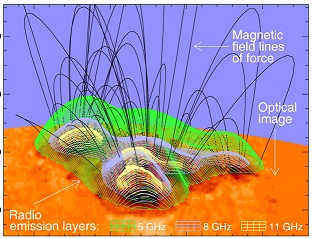
Coronal magnetography. Credit: Jeongwoo Lee
Temperature, Density, Nonthermal Electrons: In addition to magnetic fields, the spatially resolved microwave spectrum also provides measurements of temperature and column density as well as information on nonthermal particles in active regions. Multifrequency images will provide full-disk maps of coronal temperature and density to address the important topic of the nature and location of the source of heating of coronal loops.

Model active region image after 4h aperture synthesis. Credit: Stephen White
Flaring Loops and Particle Acceleration in Solar Flares
Electrons and Magnetic Fields in Flaring Loops: One of the outstanding problems in solar physics is to better understand the process of magnetic energy release and subsequent particle acceleration and transport. Radio emission is extremely sensitive to electrons at their acceleration sites in the corona, and has a unique dependence on magnetic field strength and direction within the flaring source.
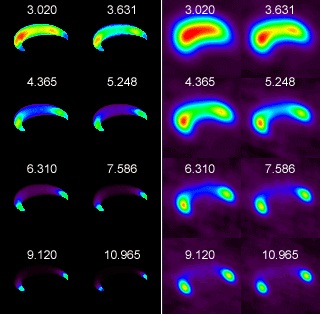
Model (left) and simulated (right) multifrequency images from a flaring loop. Credit: Gelu Nita & Gregory Fleishman
Dynamic Imaging and Turbulence: The polarized brightness temperature spectrum will be imaged on ~1 s timescale. In some theories, turbulence creates distinct spectral characteristics that, if present, can be used to infer the level of turbulence in the source. Through a better understanding of the timing and extent of electron acceleration, firm constraints will be placed on the reconnection process itself.
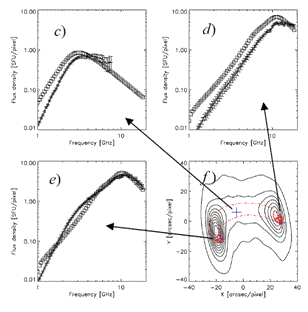
Brightness temperature spectra from various parts of the loop. Credit: Gregory Fleishman.
Drivers of Space Weather
F10.7 Images: One of the longest running indices of solar activity is the 10.7 cm (2.8 GHz) radio flux (F10.7). F10.7 full-disk images will be obtained at least twice per day. This is analogous to having soft X-ray images in addition to the GOES soft X-ray fluxes, and can be an important way of putting better understanding behind the use of this solar activity index.
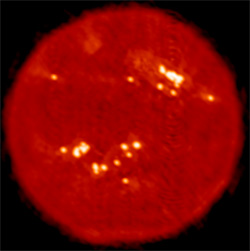
Model full disk F10.7 image after full-day aperture synthesis . Credit: Stephen White/Dale Gary
Eruptive Events: Microwave images will capture the morphology and evolution of eruptive events in which not only particles but also magnetized plasma are ejected. Dense, relatively cool plasma in erupting filaments and surges will be strongly visible through free-free emission, and nonthermal particles entrained will produce visible emission. This includes imaging of high-frequency (>1 GHz) type III bursts (electron beams streaming outward in the corona) as they traverse high loops or escape into the heliosphere.
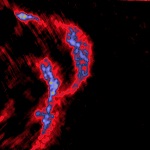
Nobeyama image of erupting prominence at 17 GHz. Credit: NoRH
Night-Time Observations of Variable and Transient Sources
Blazars: These are the nuclei of active galaxies that have a relativistic jet pointing almost directly at Earth. Two very different theories have been proposed to explain the gamma-ray emission from blazars. We will use the two 27-m telescopes to observe a few hundred objects, and thereby obtain invaluable information on the spectral and temporal evolution of radio flares in these blazars, with the goal being to determine the currently unknown jet collimation mechanism.
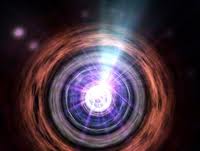
Credit: NASA/Goddard Space Flight Center Conceptual Image Lab
Long Duration Radio Transients (LDRTs): The two 27-m telescopes will search for examples of a new class of transient radio sources, with time scales longer than 30 min but shorter than several days, found by Bower et al. (2007) and Kida et al. (2008). OVSA equipped with cooled wide band receivers and processing capacity in the range 2–18 GHz can make great progress in the area of LDRTs. We estimate that 4-13 events will be detected per year.
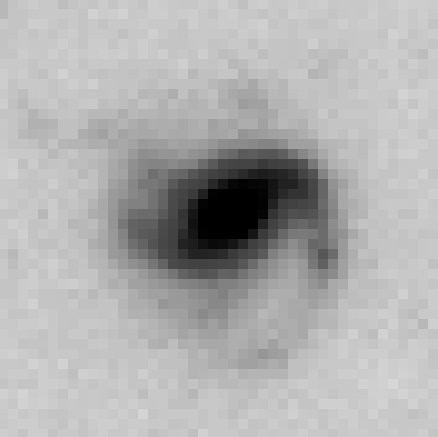
Credit: Yoldas et al., A&A 515, L2 (2010)